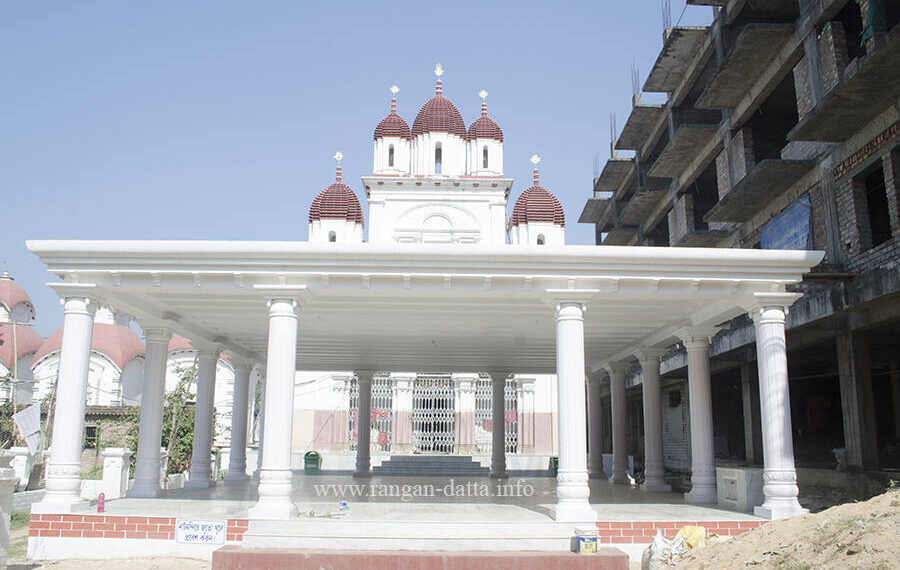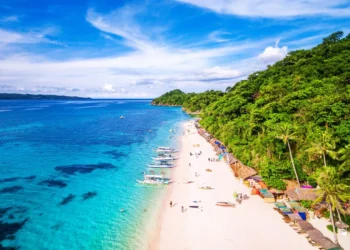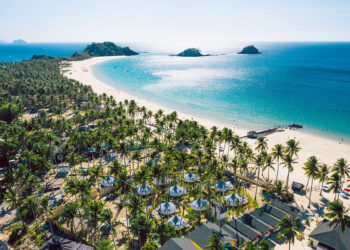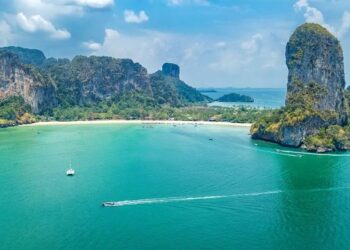On the banks of the Hooghly River in Baranagar, Kolkata, West Bengal, Kripamayee Kali Temple stands as a holy shrine for Goddess Kripamayee, a gentle form of Kali. Kripamayee roughly means “She who is merciful”. Built in 1825 by Jaya Narayan Ghoshal, it is an Upapeeta of the 51 Shakti Peethas, where Sati’s left ankle fell. The temple’s 3.5-foot black stone Kripamayee idol, with a gold crown and red cloth, marks it a Shakti Peetha, its calm riverside a terrific place for tantric rites.
History of Kripamayee Kali Temple
Kripamayee Kali Temple, over 200 years old, marks where Sati’s left ankle fell, per the Devi Bhagavata Purana, named Kripamayee for Kali’s mercy. Jaya Narayan Ghoshal, a Baranagar merchant, built it in 1825 after a dream of Kali. His kin fixed it in 1900, making it a tantric hub. A stone slab names Ghoshal’s work, including a river ghat. It pulls hundreds of devotees daily, holding a big place in Kolkata’s holy Kshetra.
Legend of Kripamayee Kali Temple
The Puranas say Kripamayee Kali Temple is an Upapeeta, tied to Sati’s left ankle falling when Shiva danced after her death. Maa Kripamayee is a kind form of Mother Kali, loved for her care. A sage by the Hooghly saw Kali in a dream, urging Ghoshal to build the temple. Called “Baranagar Kali,” it ties to Bengal’s tantric traditional worship of mother Kali. Devotees believe Kripamayee heals sickness and grants wishes and blessings.
Architecture of Kripamayee Kali Temple
Covering 1 acre by the Hooghly, Kripamayee Kali Temple uses Bengal’s char-chala style with a curved roof and eight parts, made of red brick and plaster. The main shrine, 9 meters by 9 meters, holds a 3.5-foot Kripamayee idol. A Bhairav shrine, 3 meters by 3 meters, and a Radha-Krishna temple, 5 meters by 5 meters, sit close. A 30-meter ghat meets the river. The entry, a 4-meter arch with lotus carvings, opens to a tiled yard, 1200 square meters, for thousands.
Sculptures and Carvings
The temple houses a 3.5-foot black stone Kripamayee idol, four-armed, with a sword and head, gold crown, red cloth, on Shiva’s chest. A 2-foot Shiva linga, black stone, rests in the Bhairav shrine, often covered. The Radha-Krishna temple, 200 meters off, has a 3-foot Krishna idol, white stone, with clay panels, showing Krishna’s life, painted red.
Rituals and Worship
Worship starts at 5:30 AM with priests giving flowers, sindoor, and incense. At noon, rice, dal, vegetables, and sweets like kheer are offered. Big pujas happen at Durga Puja, Kali Puja, and Amavasya, with night yagnas on new moons, especially Maghi Amavasya. On Kali Puja, the idol gets hibiscus garlands. People offer bhog and take prasad. During the Baranagar Mela in November, folk songs and old traditions since Ghoshal’s time are celebrated with reverence.
Travel Information
Getting to Kripamayee Kali Temple
In Baranagar, 10 km from Kolkata’s center, the temple is reached by metro, train, bus, or taxi, by the Hooghly River.
By Air: Kolkata’s airport, 15 km away, joins Delhi (2 hours), Mumbai (2.5 hours), Chennai (2.5 hours). Taxis take 40 minutes, ₹500–1000.
By Train: Baranagar Road Station, 1 km away, links to Sealdah (15 minutes, ₹5–20). Autos or totos take 5 minutes, ₹20–50. Dum Dum Station, 3 km away, works too.
By Road: Baranagar joins Kolkata (10 km, 25 minutes), Howrah (12 km, 30 minutes), Sealdah (8 km, 20 minutes) on NH-12.
Hours and Entry
Open daily, from 5:30 AM–1:00 PM, 4:00 PM–9:00 PM. Free entry but puja costs ₹100–500. No phones or cameras inside but can be kept in lockers at temple counters. Wear clothes covering shoulders and knees. Women in sarees or suits, men in kurtas or dhotis.
Best Time to Visit
October to March, 12–25°C, is good for visits. Durga Puja (October), Kali Puja (November), and Baranagar Mela (November) can become crowdy so better to go at dawn. Skip April–June, 25–40°C, for less heat and fewer people.
Nearby Places
Dakshineswar Kali Temple, 2 km across the Hooghly, 1855 Kali shrine.
Belur Math, 3 km, Ramakrishna Mission’s head with mixed building style.
Adyapeath Temple, 4 km, Annapurna shrine with a 5-foot idol.
Indian Statistical Institute, 2 km, old campus with history.
Baranagar Math, 1 km, Ramakrishna’s early monk site.
Cultural Significance
Kripamayee Kali Temple shows Kolkata’s tantric and folk roots. The Baranagar Mela, with bhajans and dances, keeps Bengal’s old traditions alive. Priests and locals work together for festivals, building unity. Nearby stalls sell Bengali foods like fish curry and sweets, adding to the visit.
Final Thoughts
Kripamayee Kali Temple in Baranagar, Kolkata, West Bengal, is a cherished spiritual landmark in the heart of India. Blessed by the compassionate presence of Goddess Kripamayee and set beside the serene flow of the Hooghly River, Mother Kali blesses all who visit her divine shrine. For both devotees and travelers, it stands as a must-visit among India’s sacred destinations.











